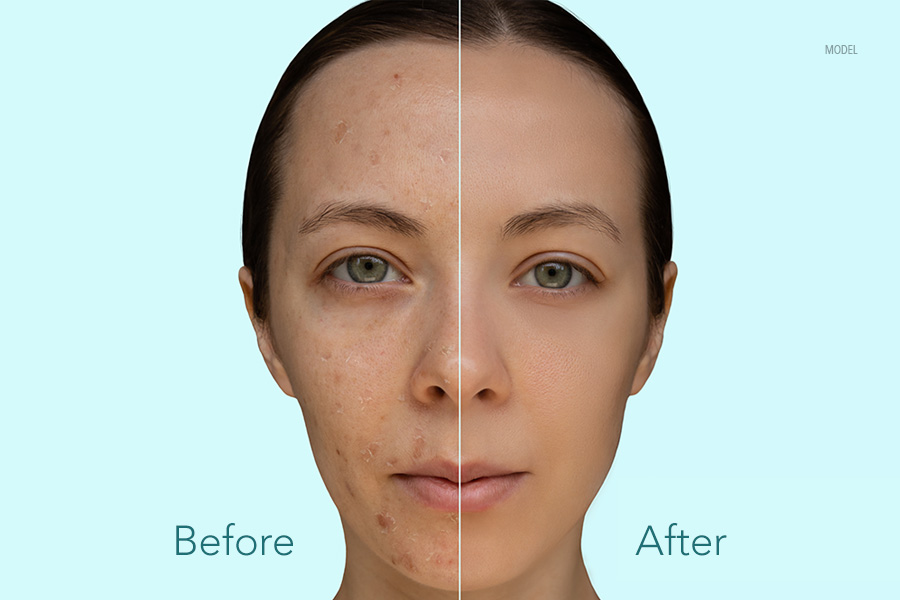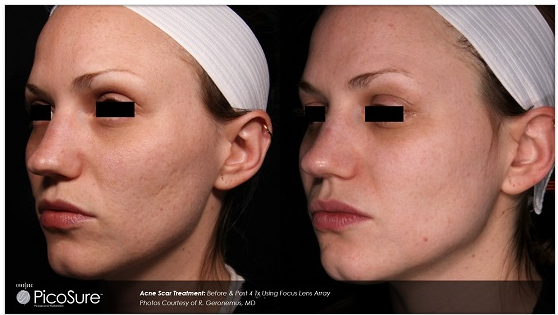About Acne Scars
Table of ContentsHow Acne Scars can Save You Time, Stress, and Money.Examine This Report about Acne ScarsThe Ultimate Guide To Acne ScarsThe Facts About Acne Scars RevealedGetting My Acne Scars To Work
Raised acne marks occur when the body creates as well much collagen and create a visible bump. As we age, acne marks become a lot more noticeably due to the fact that our skin loses collagen.An individual delays treatment for inflammatory acne. The longer you wait to look for therapy for acne, the higher the danger of scarring. A person selects at, squeezes or stands out acne. When popping a pimple, you press germs deeper right into pore. If we didn't need another factor why not to pop a pimple, recognize that a mark might be the straight outcome of your actions.
Your genetic makeup plays a large role in just how much acne, and what sort of acne you might create. As we claimed previously, there is no magic ingredient to take acne marks away in the blink of an eye. There are treatments available that help reduce the scarring with time.
, a dermatologist may lift the mark, bringing it closer to the surface area of the skin to make it less noticeable. Resurfacing removes layers of the skin, which allows the body to produce new skin cells.
The Only Guide to Acne Scars
Lasers and various other light treatments can deal with raised marks securely and successfully. (PDL) can aid reduce the itch and discomfort, reduce color, and flatten an elevated scar.
No adverse events were reported. After 3 needling treatments, there was enhancement in the look of acne scars in time compared with the control team, with very little discomfort reported. Identifier: NCT00974870 Acne scarring has been connected with considerable emotional consequences. Treatment of acne scarring remains a healing difficulty, with treatment approaches that consist of a variety of feasible options.
Nonablative and ablative lasers can be used to either get rid of or pierce skin in a penalty determine pattern, with resulting neocollagenesis; only a fraction of the skin is treated with each treatment, and a series of therapies are called for to treat the whole damaged surface. It has actually been suggested that neocollagenesis and renovation of acne scars can likewise be accomplished using needle rollers, which make use of a mechanical, macroscopic strategy to cause little skin and dermal openings.
See This Report about Acne Scars
Like paint rollers, such gadgets can be returned and forth along the skin. Needling as a possible treatment for acne scarring was introduced by Camirand and Doucet, who defined use a tattoo weapon to abrade acne marks. Fernandes,6 consequently asserted that needling with a roller led to percutaneous collagen induction.
At each of these gos to, needling was performed on the research therapy area, and topical anesthetic was just massaged into the control area. Digital pictures and unfavorable occasions (eg, infection, prolonged erythema, long term edema, serosanguineous drain, blood loss, ulceration, erosion, and coloring), including their period, resolution, intensity, connection to the study treatment, and any medicinal activities taken, were taped before each treatment.

Discomfort degree was recorded based upon a 10-point aesthetic analog scale after the procedure. Instantly after each therapy, mild manual pressure with gauze was gotten 5 minutes to manage identify blood loss and serum secretion. The skin was saturated with saline swabs for an hour to promote hydration while the people were enlightened regarding this hyperlink the requirement for home treatment.
What Does Acne Scars Do?
The tool was then more cleaned up by gas sterilization, saved in a closed package, and identified with the individual's name and the first therapy day on package until the following treatment. This sanitation procedure was followed to guarantee a high degree of infection control in this study setup. The main result step was the quantitative international scarring grading system, developed by Goodman and Baron.
Two blinded dermatologists (S.H. and M.P.) independently ranked individuals' acne scars based on typical electronic photos acquired at baseline and at the 3-month and 6-month follow-up sees. Compelled arrangement was utilized to reconcile rankings. Considered that this was an early pilot trial, we considered it ideal to think about acne marks jointly, not individually, by numerous morphologic subtypes (eg, rolling, boxcar, ice pick, and more).
and M.P.) did not take part in randomization or treatment and therefore were able to be blinded regarding job. Adjustments in mean scar scores from standard to 3 and 6 months, respectively, were calculated for the therapy and control arms. Repeated-measures analysis of variation with pairwise comparisons with Sidak adjustment were executed to examine whether the mark score varied on therapy type, time, or the communication in between the 2.
The Wilcoxon signed rank test was utilized click here for more to assess whether the difference in general acne scar look was linked with treatment type. Twenty people consented, and 5 went down out prior to the first therapy.
The Ultimate Guide To Acne Scars
The needling procedure was not especially agonizing. Pain ratings increased somewhat over time (P =.01), these details with week 4 discomfort rankings (mean, 1.75; 95% CI, 0.90-2.60) substantially greater than week 2 (mean, 0.78; 95% CI, 0.40-1.20) and week 0 (mean, 0.71; 95% CI, 0.40-1.00).
When asked to estimate the pain experienced throughout and in the days after their procedure, individuals frequently reported no pain (acne scars). The majority of individuals were very completely satisfied with their procedure, replied indeed when asked if they would do this treatment once more to treat additional marks, and claimed they would certainly suggest needling to their close friends
Mild short-term erythema and edema, which were not identified as unfavorable events and thus not officially tracked, were regularly observed by the investigator (M.A.) and reported by participants after treatments. This study reveals some improvement in acne marks after a collection of 3 treatments of needling. There is a statistically substantial renovation in such scars in the therapy group from standard to 6 months and no significant enhancement throughout this duration in the control group.
